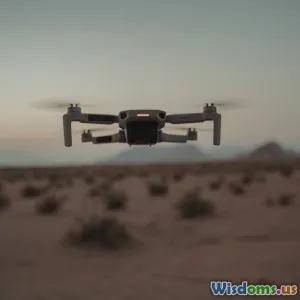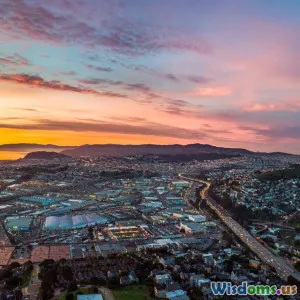
Emerging Trends in Photography
8 min read Discover the latest photography trends shaping the art and technology of capturing images today. (0 Reviews)
Emerging Trends in Photography: Shaping the Future of Visual Storytelling
Photography is an ever-evolving art form and medium, continually shaped by technological advancements and cultural shifts. From the grainy film photos of decades past to the crisp, ultra-high-res images of today, photography keeps transforming how we record and interpret the world around us. As of 2024, this evolution accelerates with groundbreaking innovations and novel creative approaches that photographers must understand to remain relevant and inspired.
In this article, we dive into the most influential emerging trends in photography. Whether you’re an aspiring shutterbug, a seasoned professional, or simply a photography enthusiast, these trends will offer new perspectives, fresh techniques, and inspiration for your next photographic journey.
1. Artificial Intelligence Enhancing Creativity and Workflow
Artificial intelligence (AI) is revolutionizing photography, not just behind the scenes but on the very front lines of creation and editing. AI-powered software now aids in everything from automatic scene recognition and noise reduction to advanced editing that sometimes fools the human eye.
One standout example is Adobe's Sensei AI technology in Photoshop and Lightroom, which streamlines tasks like sky replacement, portrait enhancement, and masking. This not only dramatically cuts down editing time but also democratizes high-end editing effects to photographers of all skill levels.
Moreover, AI-driven cameras, especially in smartphones, analyze lighting and subject positioning in real-time to optimize shutter speed, focus, and exposure. This means even casual photographers can capture near-professional quality without manual adjustments, as evidenced by smartphones like the Google Pixel 8 and Apple iPhone 15.
However, the AI trend also raises ethical questions within the community, especially concerning image authenticity. With tools that can generate hyper-realistic edits or alter content extensively, photographers are having to navigate the balance between artistic license and truthfulness.
2. Rise of Drone Photography and Aerial Perspectives
Drone technology has transformed photography by enabling incredible aerial perspectives that were once accessible only to those with helicopters or cranes. Modern drones have become more affordable and user-friendly, granting hobbyists and professionals alike fresh vantage points.
For example, DJI’s latest Mavic 3 drone offers a 4/3 CMOS sensor, zoom capabilities, and cinematic stabilization, bringing near-professional aerial photography to portable devices. Real estate, landscape, and event photography benefit deeply from the scope drones provide.
Moreover, drones are used in creative storytelling to add dynamic motion through cinematic flythroughs and tracking shots. This trend expands possibilities not only in static imagery but also within visual video compositions.
However, with increased drone usage, regulations are tightening in many countries to ensure privacy and safety. Photographers must stay informed on flight permissions and no-fly zones to avoid legal complications.
3. Mirrorless Cameras Dominate the Market
The shift from DSLR to mirrorless cameras continues to gain momentum. Mirrorless systems are now favored due to their lighter weight, faster autofocus systems, and live electronic viewfinders that offer a real-time preview of exposure and effects.
Manufacturers like Sony with their Alpha series, Canon's EOS R line, and Nikon’s Z cameras are pushing the boundaries of sensor performance, low-light capabilities, and video integration. For example, the Sony A7 IV delivers 33MP resolution combined with advanced autofocus and 4K video recording, a powerhouse for hybrid shooters.
Many professional photographers have transitioned entirely to mirrorless setups due to these advantages, indicating the waning presence of DSLRs in the professional field. Lens ecosystems for mirrorless mounts also continue expanding, making the transition more accessible for photographers.
This shift impacts workshop programs and photojournalism fields where speed, portability, and adaptability are paramount, reaffirming mirrorless technology as a game-changer.
4. Sustainable and Ethical Photography Practices
In an era increasingly conscious of environmental and social impact, sustainable photography is emerging as a vital trend. Photographers are rethinking materials, travel habits, and subject choices to minimize ecological footprints.
Practitioners adopt energy-efficient lighting, eco-friendly printing methods, and even recycled materials in physical photo products. For example, print labs now offer plant-based inks and paper sourced from sustainable forests.
On the ethical front, respect for subjects’ privacy and consent has grown in importance, particularly in documentary and street photography. Initiatives promoting fair representation of diverse communities encourage more responsible storytelling.
Organizations like the World Press Photo Foundation emphasize these values, encouraging photographers to balance powerful imagery with respect and integrity.
5. Cinemagraphs and Hybrid Visual Content
As social media platforms prioritize dynamic and engaging content, cinemagraphs—still photos with subtle motion—have surged in popularity. These hybrid images captivate viewers, blending the simplicity of photography with the allure of video.
Brands such as Nike and Samsung use cinemagraphs in marketing to catch attention without overwhelming with full motion videos. For photographers, mastering cinemagraph creation through tools like Flixel or Photoshop opens opportunities in advertising and digital media.
This trend reflects a broader convergence of photography and videography, encouraging photographers to expand skill sets towards multimedia storytelling.
Conclusion
The landscape of photography in 2024 is marked by rapid technological innovations, evolving creative techniques, and a growing emphasis on ethical and sustainable practices. From AI-powered editing to aerial drone shots, mirrorless camera dominance, and dynamic cinemagraphs, these trends highlight a vibrant, exciting era for image-making.
Photographers embracing these advancements not only enhance their artistic expression but also deepen their connection with audiences in new and profound ways. Whether you want to streamline your workflow, explore breathtaking angles, or integrate video elements, the key is to stay curious and adaptable.
The future of photography is not just about better equipment—it's about reimagining how we capture and communicate the complexity of the modern world through light and lenses.
By understanding and adopting these emerging trends, photographers everywhere can position themselves at the forefront of their craft, inspiring and influencing visual culture in meaningful, cutting-edge ways.
Rate the Post
User Reviews
Popular Posts

















